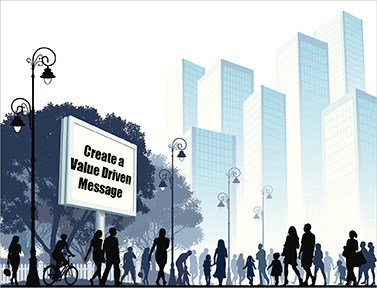7 Key Strategies to Debunk a Serious Exhibitor Myth
There’s a myth out there that many exhibitors believe. That myth is that show management assume total responsibility for attracting prospects to the show, and then directing them to your exhibit to buy your products/services.
By Susan Friedmann, CSP
The Tradeshow Coach

There’s a myth out there that many exhibitors believe. That myth is that show management assume total responsibility for attracting prospects to the show, and then directing them to your exhibit to buy your products/services.
What this means is that, ultimately exhibitors want to make show management responsible for their show success. Why? Because it’s a whole lot easier to blame them when they don’t do well at the show.
Let’s set things straight so you fully understand show management’s role and your role.
The truth is that show management is only responsible for promoting the show to the right target audience. They are accountable to exhibitors for delivering quality traffic to the show. However, what visitors do and where they go once they are at the show is no longer under show management’s domain.
This means that, as an exhibitor, it’s your obligation, to let your target audience know what you will be exhibiting, where your display is located, and why they should visit you.
According to tradeshow research, 76 percent of show attendees come to a show with a fixed agenda. If they don’t know about you, the chances are slim that they will find you, especially at large shows. So, pre-show promotion, that is advertising and marketing, is a key ingredient to your exhibiting success.
With that in mind, let’s zero in on seven essential strategies to create a well-defined pre-show promotional plan.
1. Cover all areas
A significant part of your company’s exhibit marketing is going to include promotion – before the show, during the show and after the show. Many exhibitors fail to have a plan that encompasses all three areas. Yet, like a three-legged stool, you need all the legs to create a solid platform.
2. Begin with the end in mind
A well-defined pre-show promotional plan is not planned in a void. Rather it uses your overall quantifiable exhibiting goals as a springboard. It’s these goals that help form your advertising and marketing decision making. Plus, your exhibiting budget plays a major role in determining what and how much promotional activity is possible.
3. Target your prospects
The key to successful pre-show promotion is targeting those people who you really want to actively walk into your exhibit, find out more about you, and do business with you. This means you need to know and understand exactly who are the right people to target.
4. Understand your prospects
To effectively attract the right people into your exhibit, you must fully understand what your target audience is looking for. More often than not, prospects are looking for solutions to different problems or challenges they’re having. They’re looking for new applications, or technologies that will save them time, or money. That’s often one of the major reasons they come to the show.
Just like in retail, the number #1 reason customers walk into a store is because that store is selling something they want to buy.
5. Create a value-driven message
To differentiate your company/products/services you need to create a message that excites prospects and offers them real value. Consider what you have that is different, or better than your competition. For example, do you have a better guarantee, offer faster delivery, boast the lowest price, or have the largest selection?
6. Formulate the delivery
As you think about your message you want to clarify exactly who you’re going to contact; how you’re going to contact them; when you’re going to contact them, and what you’re going to tell them.
7. Choose the right promotional tools
Promotional tools are the means by which you communicate with the people you want to invite to your exhibit. There are eight major tools that exhibitors use to generate traffic and create name and brand awareness. These are:
- Personal invitations
- Telemarketing
- Direct mail
- Advertising
- Public relations
- Sponsorship
- Social Media
Avoid the temptation to use all the tools. Rather, take time to consider which ones best help achieve your goals. But, remember that it’s not what you spend on promotion, but how you spend it that’s critical.
And, realize it’s your responsibility and show management’s to attract the right prospects to your exhibit.
Need more information?
Susan Friedmann, CSP
The Tradeshow Coach
P.O. Box 1156
Lake Placid, NY 12946
518-523-1320
Twitter

